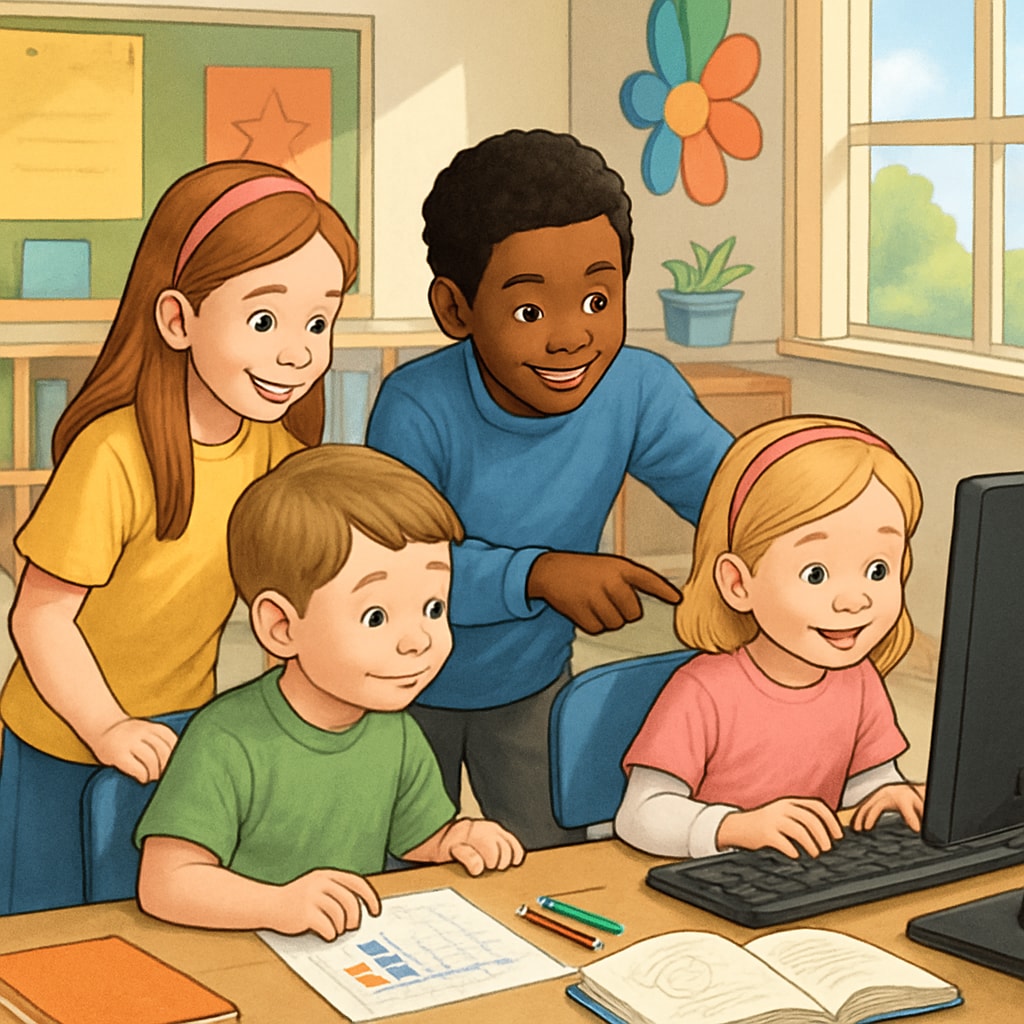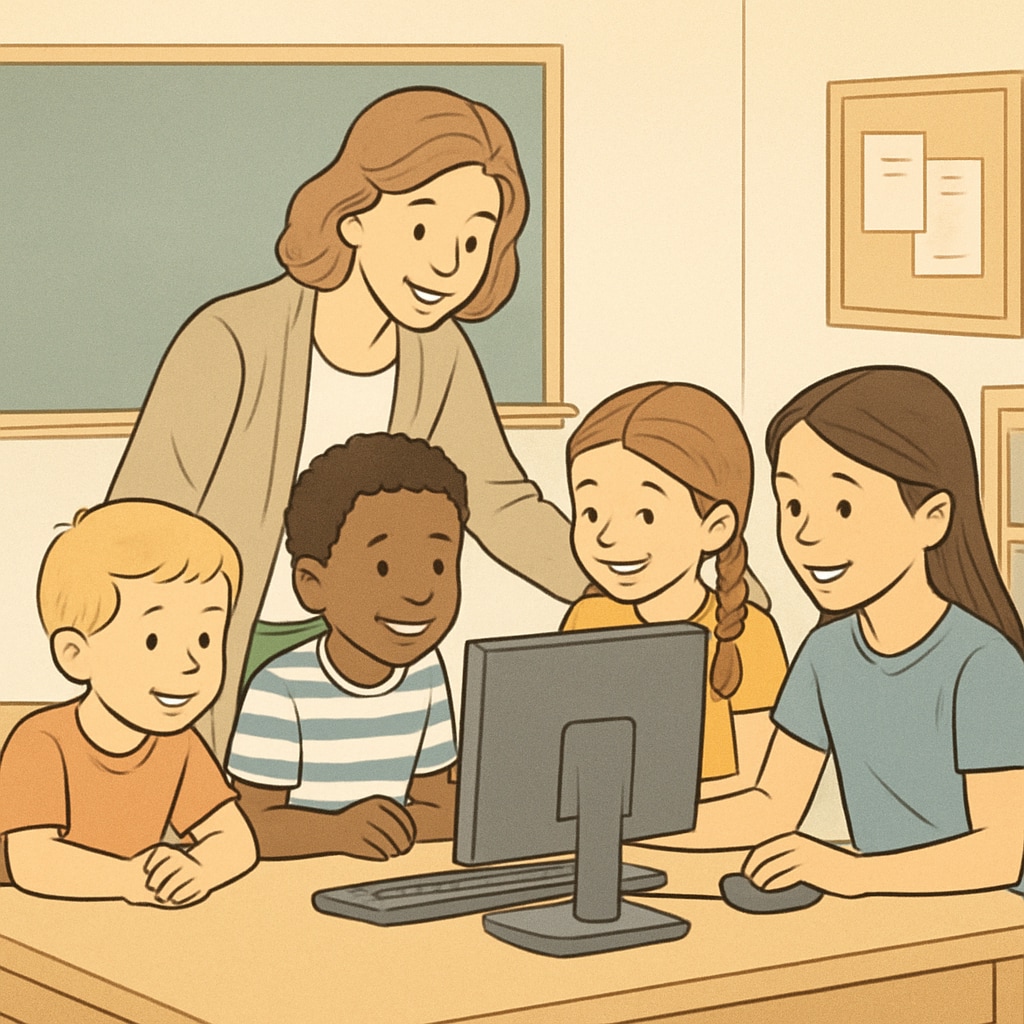Cross-age collaboration, particularly through kindergarten and fourth-grade partner projects, offers immense educational value. These initiatives combine the curiosity and creativity of young children with the mentorship and leadership of older students, fostering mutual learning and growth. Structured computer activities serve as a powerful tool in these projects, encouraging engagement, skill development, and teamwork. Below, we outline eight innovative activity ideas and practical strategies to help educators implement effective cross-age programs.
Why Cross-Age Collaboration Matters
Cross-age partnerships leverage the strengths of different age groups to create a dynamic and supportive learning environment. Kindergarten students benefit from individualized attention and guidance, while fourth-grade students develop leadership, empathy, and communication skills. For example, younger children may gain confidence by working alongside older peers, and fourth graders can reinforce their own understanding by teaching concepts to younger students.

Innovative Activity Ideas for Kindergarten and Fourth-Grade Partners
Here are eight creative activities to foster collaboration between these age groups:
- Interactive Storytelling: Fourth graders can help kindergarteners create and illustrate their own digital storybooks using tools like Storybird or Canva.
- Educational Games: Develop simple computer-based games together, such as matching games or puzzles, using platforms like Scratch.
- Virtual Field Trips: Explore online museums or nature reserves as a group, with fourth graders guiding kindergarteners through the experience.
- Art Collaboration: Use digital drawing tools like Paint 3D to create collaborative art pieces that combine the ideas of both age groups.
- Science Exploration: Conduct virtual science experiments, with fourth graders explaining concepts and kindergarteners engaging in hands-on activities.
- Math Puzzles: Work together to solve age-appropriate math puzzles online, with older students providing guidance and support.
- Digital Scrapbooking: Create a shared scrapbook of classroom memories using platforms like Google Slides, with both groups contributing content.
- Programming Basics: Introduce kindergarten students to coding with simple exercises on platforms like Code.org, supported by fourth-grade mentors.
Structured Computer Activities: Practical Implementation Strategies
Structured computer activities are particularly effective for cross-age collaboration. Here are some strategies to ensure success:
- Set Clear Objectives: Define the goals of the activity, ensuring they align with the developmental needs of both age groups.
- Choose User-Friendly Tools: Opt for software and platforms that are accessible and intuitive for younger students.
- Encourage Peer Teaching: Allow fourth graders to take on mentorship roles, guiding kindergarteners through tasks and answering their questions.
- Monitor Progress: Regularly check in to ensure both age groups are engaged and benefiting from the activity.
- Celebrate Achievements: Showcase completed projects to highlight the collaborative efforts and boost confidence in both groups.
As a result of these strategies, educators can foster a productive and enjoyable learning experience that bridges age gaps and builds essential skills.

Challenges and Solutions in Cross-Age Projects
While cross-age collaboration has many benefits, it also presents challenges. For example, differences in attention spans, skill levels, and communication styles may arise. To address these issues:
- Pair Thoughtfully: Match students based on complementary strengths and personalities.
- Provide Training: Equip fourth graders with basic mentorship skills before starting the project.
- Adapt Activities: Modify tasks to ensure they are engaging and appropriate for both age groups.
- Facilitate Interaction: Actively monitor and support pairs to maintain positive dynamics.
By proactively addressing these challenges, educators can ensure that cross-age projects run smoothly and achieve their intended outcomes.
Conclusion: The Lasting Impact of Cross-Age Collaboration
Kindergarten and fourth-grade partner projects offer a unique opportunity to foster meaningful connections, enhance learning, and develop essential life skills. Whether through structured computer activities or other creative endeavors, these collaborations benefit both age groups in profound ways. By implementing thoughtful strategies and innovative ideas, educators can unlock the full potential of cross-age learning.
For further insights into cross-age collaboration, visit authoritative resources like Educational Collaboration on Wikipedia or Peer Learning on Britannica.
Readability guidance: Use short paragraphs and lists to summarize key points. Ensure smooth flow with transition words such as “however,” “therefore,” and “in addition.” Keep passive voice and long sentences to a minimum for clarity.


